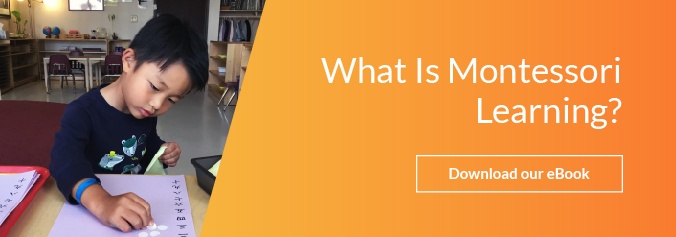Learning is not something that happens in a vacuum. Learning can happen inside the classroom and in just about every other area of your child’s life. In your child’s world, school and home are likely the two places he or she spends the most time. You can have a significant impact on your child’s classroom learning by extending it to your home. The Montessori Method can be applied to the home environment. As a parent, there are steps you can take to provide learning opportunities at home that align with the type of learning your child does in the classroom.
Encourage your child to explore
An important part of the Montessori Philosophy is the belief that children learn through exploration. When students are provided with the opportunity to deeply explore topics of interest, the learning process is transformed. This approach to learning removes the friction that is so common in the classroom. When students are able to explore topics of interest, they do not have to be forced to learn or engage with the process. You can take this view of learning and extend it into your home. Encourage your child to explore. If your child loves plants, encourage him or her to go outside and identify the plants in your yard. Take a trip to the local nursery and learn about the different varieties of roses. Plant a garden together. These are just a few examples of ways you can encourage your child to explore and make that exploration possible. This type of learning does not feel like a chore to kids because they are interested in the topic.
Create opportunities for focused effort
It is a common misconception that children are incapable of focusing on a task or topic. Children can put forth a focused effort and deeply engage with a topic. This can be witnessed daily in the Montessori classroom. The teacher in the Montessori classroom facilitates this type of focused effort by setting up prepared learning areas. Students are then given time and space to dig into the topic and activities in the prepared learning area. Age and developmentally appropriate activities can keep even the youngest students engaged. At home, you can create opportunities for your child to practice this type of focused effort. The two primary elements of extending this type of learning from the classroom to your home are the topic and space. Start by identifying topics that are of interest to your child. Then, give your child space to really dig into that topic. A child with interest in plants, for example, can spend a lot of time outside collecting examples of wildflowers, exploring a book on plants that you purchased, or watching a documentary about plants. All of these activities can be interesting for your child and add to his or her learning. You, as the parent, can provide your child with the space to spend in focused learning. Provide a time/area free from distractions and make sure that your child does not feel rushed or pressured. This will mirror what happens in the Montessori classroom and allow your child to practice using focused effort.
The Montessori Philosophy is a philosophy of education that is simple to implement in the home. You can see the Montessori Method in action by observing a class at Fountainhead Montessori School. Seeing how teachers implement the Montessori Method will help you understand how to implement it in your home as well.












Let us know what you think about this post
Put your Comment Below: